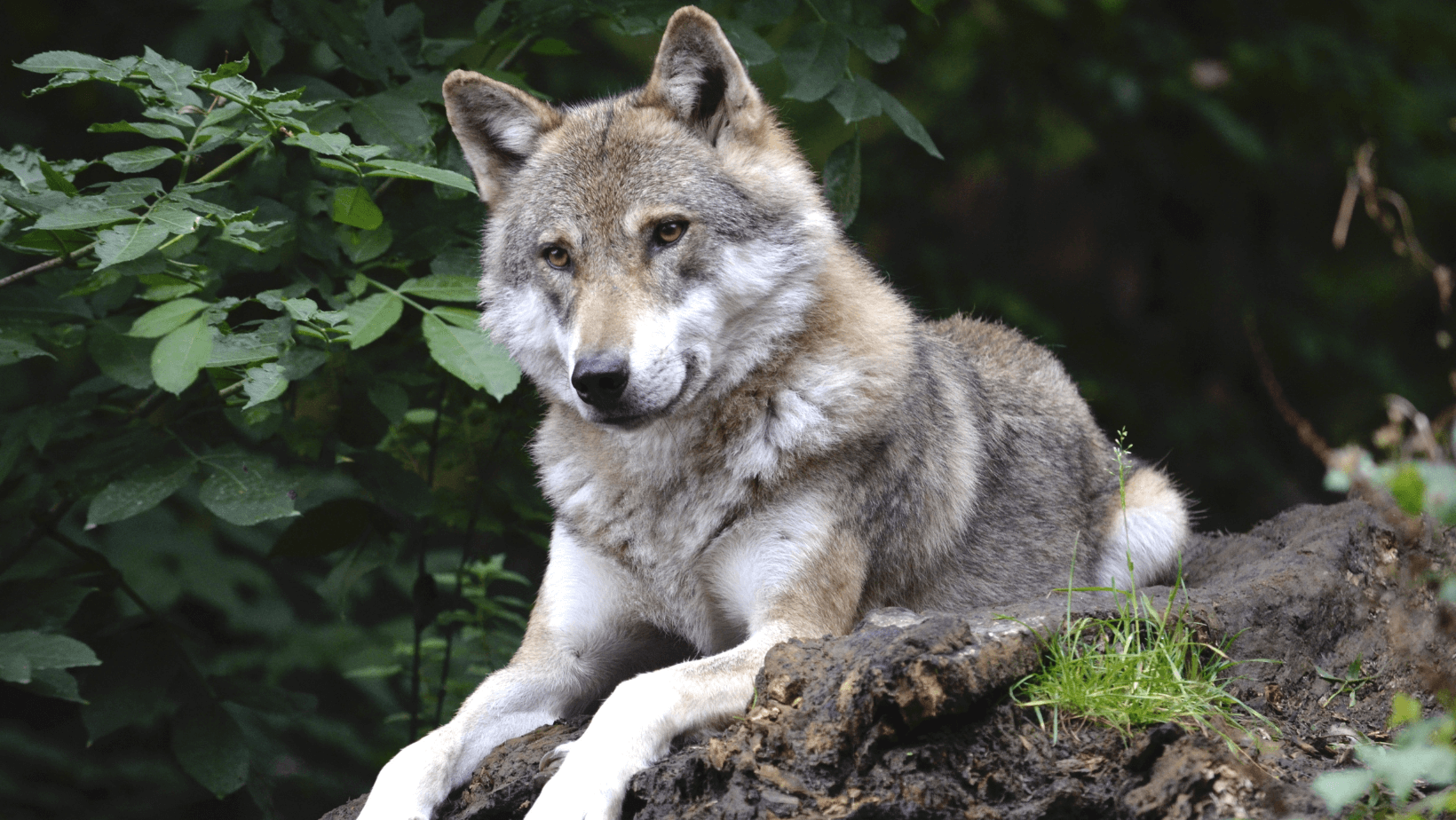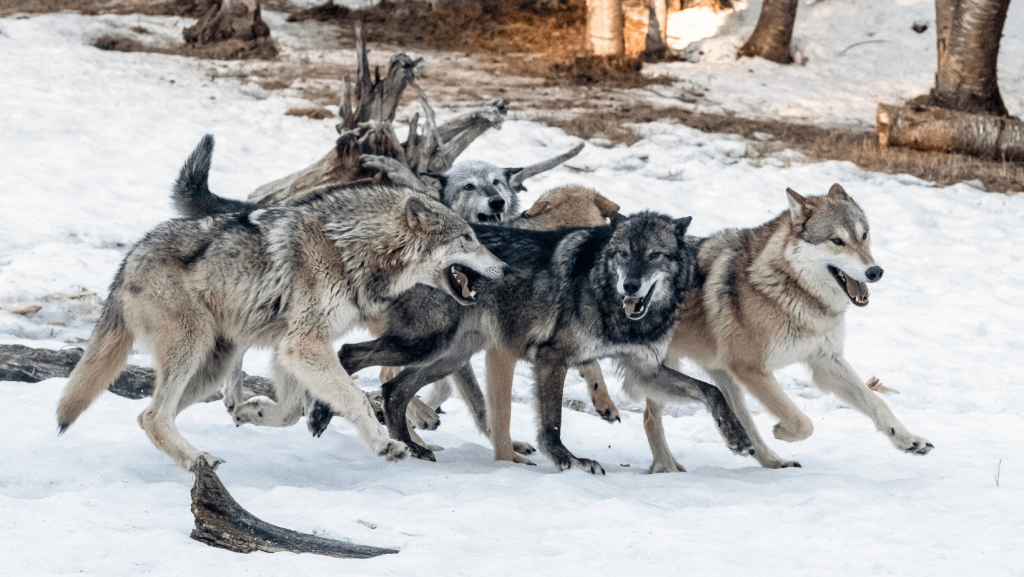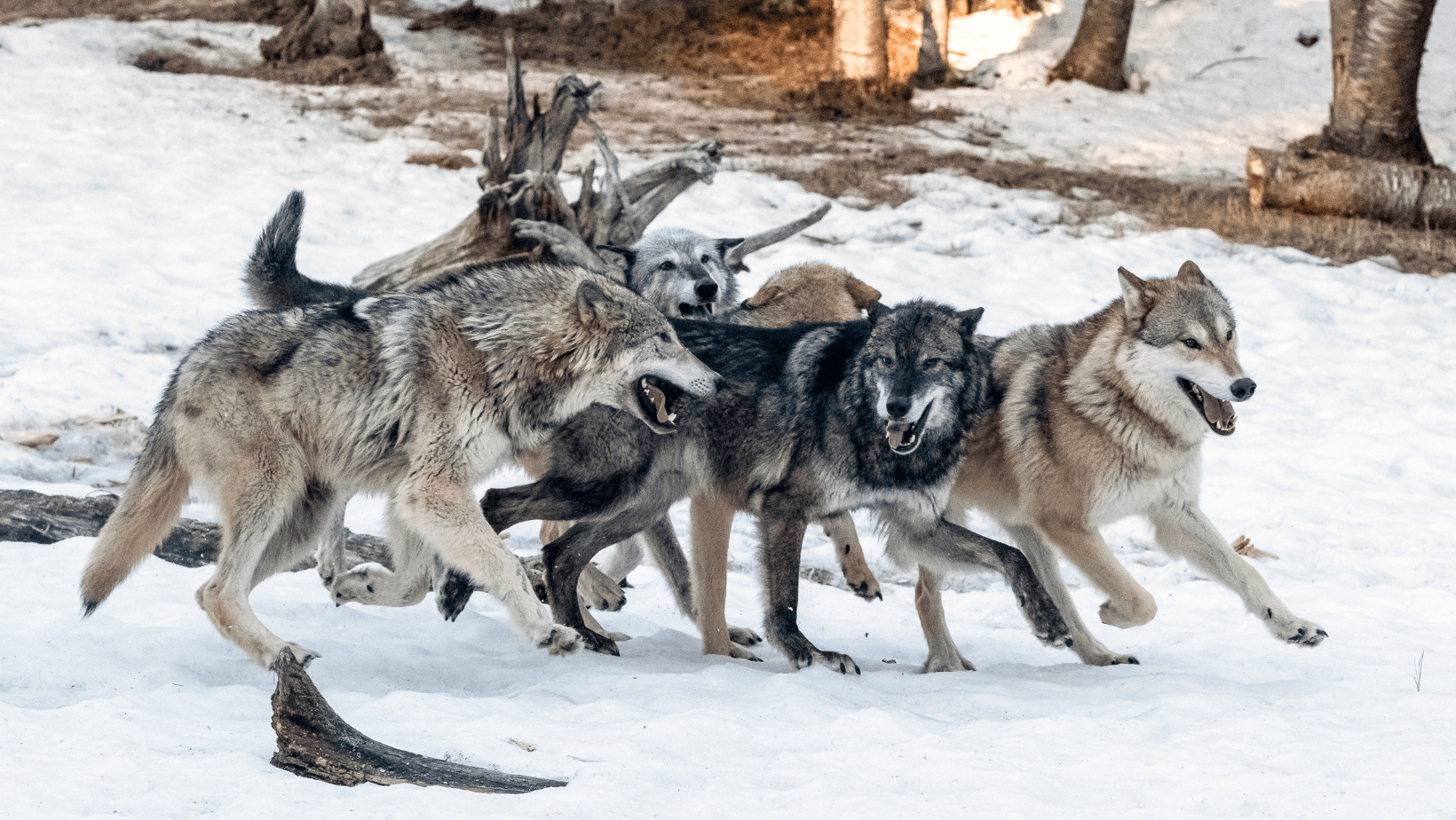
Wolf Species
The gray wolf, also known as the timber wolf, is the best-known species. It is the largest nondomestic member of the dog family and can be found in vast areas of the Northern Hemisphere. While habitat loss has now decreased its distribution, the gray wolf once had one of the largest distributions of any land mammal. They could once be found in every type of habitat except tropical forests and the aridest deserts.
While the gray wolf is the most well-known, the Ethiopian (or Abyssinian) wolf is another major species. They inhabit the highlands of Ethiopia and until recently were considered jackals rather than wolves. Most often, they have red coats with a white underbelly, a bushy black tail, pointed ears, and a slender snout.
Several subspecies of wolves are also found throughout North America, Eurasia, and Africa. However, there are disagreements on the number of subspecies that exist. The subspecies count can become muddied by the use of various different common names by culture and geographic region. For example, a gray wolf living on the tundra may be called a “tundra wolf” even if it’s not an actual member of the subspecies.

Pack Animals
Most commonly, wolf packs consist of six to ten individuals. However, they can consist of up to two dozen individuals. Packs are essentially family groups that often consist of an adult breeding pair – the alpha male and alpha female – with their offspring of various ages. The animals form strong social bonds with each other, which makes the pack organization possible.
Each pack has an established dominance hierarchy, which helps maintain order. The alphas guide the activities of the group by asserting themselves over their subordinates. Alpha females commonly take on roles like the care and protection of pups. Alpha males predominate in foraging, food provisioning, and travel associated with those activities.
The abundance of prey can significantly impact the size of a pack’s territory, ranging anywhere from 80 to 3,000 square kilometers (31 to 1,200 square miles). Territories are vigorously defended against neighboring packs. Individuals communicate with each other using scent marking, visual cues using the face, body, or tail, and vocalizations. Of course, the howl is the wolf’s most legendary vocalization. Howling helps the pack stay in contact. It also appears to strengthen social bonds among pack members.

Domesticating The Wolf
Around 15,000 years ago, wolves were first domesticated by humans in northern Eurasia. Selective breeding of domesticated animals eventually lead to the development of dogs. There are competing schools of thought about how the process of domestication came about. Traditionally, experts studying the evolution of dogs believed that it was a conscious effort of humans by taking wolf pups from the den, then training and taming them.
However, some believe that this theory is unlikely for several reasons. Biologist Raymond Coppinger has stated that modern studies have been unable to successfully train a wolf if they started past the age of 19 days. And experiments that began with 13-day-old pups required 24/7 care and attention – something Mesolithic people would have likely been unable to provide. Plus, even tamed wolves are hostile when it comes to food and breeding. With this in mind, some biologists, including Coppinger, believe that wolves domesticated themselves.
This process likely would have begun around the end of the last Ice Age, when people first began to gather and live in the same place. As villages began to appear, the collection of waste and food scraps attracted scavengers like rats, cockroaches, pigeons, and wolves. A behavioral characteristic called “flight distance” – how close an animal will allow humans before fleeing – is key to this theory. Animals with shorter flight distances lingered near humans to feed. This trait was then passed on and amplified in successive generations, creating animals that were increasingly more comfortable around humans.
Weekly Trivia
Enter your guess to reveal the answer.

